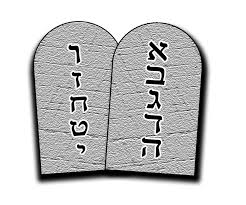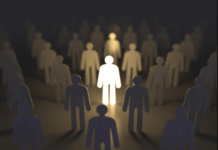
Q&A with Rabbi Apple
A DIVORCE PARTY?
Q. I know some people that are making a party to celebrate getting divorced. Do you approve?
A. I would like to re-phrase your question.
Kohelet says there is a time for everything, including a time to weep and a time to laugh (Koh. 3:1,4). What is divorce – a time to weep? A time to laugh?
According to the rabbinic sages, when a couple divorce even the altar in the Temple weeps tears, and this does not sound very much like laughter.
The fact is that divorce does not happen out of the blue. There are several stages leading up to it and several leading away from it.
Some of those who have been through the experience describe it like this:
Beforehand there is indecision (“Shall we stay together? Shall we part?”). Then comes decision (“We have to do something about it. We have to separate”). The legal procedures may take two contrasting forms – a couple who snarl, a couple who are at ease with each other. There is renewed anxiety and loss once it all sinks in.
Finally there is the difficult coming to terms with the break, the difficult climb back onto the ladder of life.
All is more complicated and painful of course if there are children.
My rabbinical career brought me into contact with many cases of divorce. There was much more weeping than laughter. I too heard of people having divorce parties but I never met anybody who actually had one.
Let me add that on a few occasions I conducted a remarriage of a couple who had divorced each other and then decided they could and should have worked harder on their original marriage. Only on those occasions did I actually know of there being a party.
IS “SHEOL” HELL?
Q. Can you explain the word “Sheol”? Does it mean Hell?
A. “Sheol” (better pronounced “Sh’ol”) is of uncertain etymology.
It was a place where those who had died were believed to congregate.
Jacob, refusing to be comforted at the death of Joseph, says: “I shall go down to my son as a mourner to Sh’ol” (Gen. 37:35).
Sh’ol was very deep (Prov. 9:18) and it marks the greatest possible distance from Heaven.
Sh’ol is described as a land (Job 10:21,22) with gates (Job 17:16) and divided into compartments (Prov. 7:27).
All the dead meet there (according to Ezek. 32; Isa. 14, etc.) and it is a place of silence (Ps. 6:6, 30:10, etc).
It is not a bad place, nor is it necessarily the equivalent of Hell.
The idea that a person does not go to Sh’ol until gathered unto their fathers was taken literally. The dead bones were sometimes carried around till “families” could share the same grave (e.g. the Cave of Macphelah, where Abraham, Isaac and Jacob were buried).
To be buried “with one’s fathers” was important in early Biblical narrative and in other cultures.
PATRILINEALISM
Q. What is your response to the Reform movement allowing recognition of people as Jewish who have a Jewish father, but not a Jewish mother?
A. Someone said that the poor will always be with us. That may or may not be true, but as far as Jews are concerned there are certain questions that are always with us: God and man, life and death… above all, the question of Jewish identity.
In other words, Who is a Jew?
Yitzhak Rabin asked, “How many faces has Judaism got?” Fair enough, but if we are going to ask questions why not ask, “How many parents does it take to make a Jew?”
One is reminded of the Sukkot question: how many walls does it take to make a sukkah? The answer? Ideally, four – but three will also do, and in certain circumstances two and a half. So, how many parents does it take to make a Jew?
It depends on whether either or both parents are Jewish themselves. Ideally, two Jewish parents make a child Jewish. Traditionally, one is also acceptable, provided it is the mother. And thereby hangs the tale.
What if the one parent who is Jewish is the father? (One could of course also ask what happens if neither parent is Jewish and the child wants to enter Judaism by conversion. But that’s another story).
The matrilineal principle – Jewishness by maternal descent – has been the rule throughout history.
When in 1958 David Ben Gurion wrote to scholars in many countries asking for their definition of a Jew, most respondents, whatever their personal affiliation, endorsed the traditional definition and said that “only one who is born to a Jewish mother or who is converted to Judaism according to halachah” could be regarded as Jewish (B Litvin, Jewish Identity, ed. SB Hoenig, 1965).
The Biblical source of the principle is Deut. 7:3-4, which refers to “your son” as the child of an Israelite mother, implying, according to rabbinic exegesis, that a child is not “your son” in a religious sense if the mother is non-Jewish.
This conclusion found in the Talmud (Kidd. 65b, 68b) is cited and accepted by all halachic authorities, including Maimonides and the Shulchan Aruch. There are no dissenting opinions, either in the Talmud or from later rabbis. This has been the unbroken rule throughout history.
Lord Jakobovits offers this rationale (The Timely and the Timeless, 1977, pages 198-217):
1. The certainty of maternity must be set against the possible doubt of paternity.
2. Even in nature the mother’s bond with her child is firmer than the father’s.
3. The mother has the superior influence on the child’s religious development.
4. In a mixed marriage, Jewish law technically regards the child as having only one parent, the mother.
Outside orthodoxy, in an age in which our numbers are not increasing whilst mixed marriage is, both the rule and the rationale are questioned.
David Goldberg, a British Liberal rabbi, argues that the halachic definition “cannot be justified biologically, eugenically, genetically or educationally” and that “can only be defended on the basis of tradition” (Jewish Chronicle, 27 August, 1982).
It is also argued that commitment to Judaism is a more important pointer than whether or not the mother happens to be Jewish.
The outcome is that the Reform movement is prepared to accept as Jewish the child of a couple of whom either parent is a Jew, on the basis that this will make Judaism more inclusive. There are many good reasons why this policy must be opposed:
1. A person who wants to be accepted as Jewish has the option of conversion.
2. It is a counsel of defeat to confer Jewish status upon people for the sake of increasing our numbers; the constructive option is to make better Jews of the Jews we have, and to encourage them to have larger families of Jewish children.
3. The policy would encourage mixed marriage and threaten our survival, especially since twice as many Jewish men marry out compared to women.
4. Since the Jewish character of the home is still largely in the hands of the woman, a non-Jewish mother is unlikely to create a Jewish atmosphere for her children.
5. If Jewish law can be unilaterally turned on its head, why maintain other possibly inconvenient principles or practices of Judaism?
6. Since orthodoxy will not join in the Reform policy but remain pledged to the halachah, Reform will have irrevocably split the entire Jewish people.
7. The policy is not fair to the next generation, who will find that their parents have saddled them with an unnecessary identity crisis.
No-one denies we have problems, but patrilinealism solves none of them.
Rabbi Raymond Apple was for many years Australia’s highest profile rabbi and the leading spokesman on Jewish religious issues. After serving congregations in London, Rabbi Apple was chief minister of the Great Synagogue, Sydney, for 32 years. He also held many public roles, particularly in the fields of chaplaincy, interfaith dialogue and Freemasonry, and is the recipient of several national and civic honours. Now retired, he lives in Jerusalem and blogs at http://www.oztorah.com









